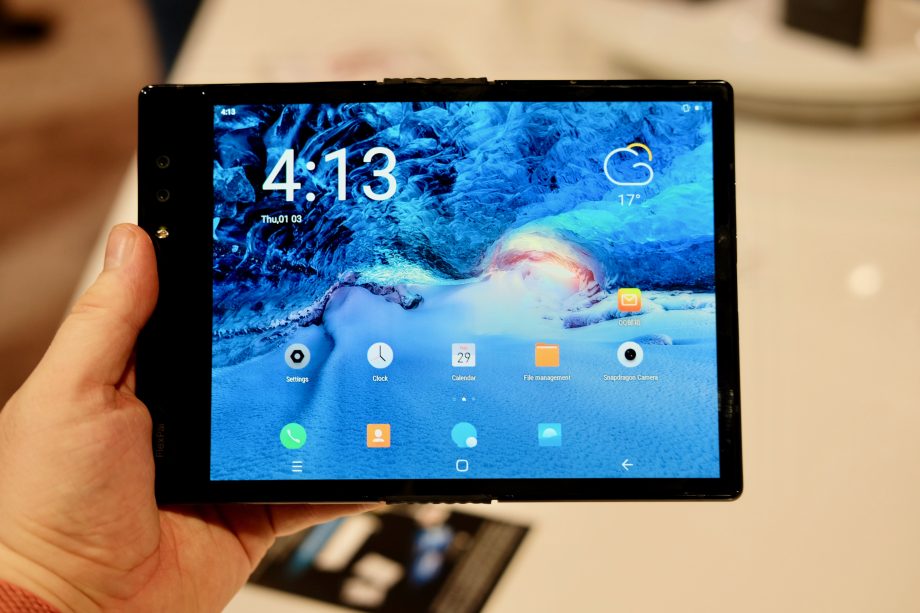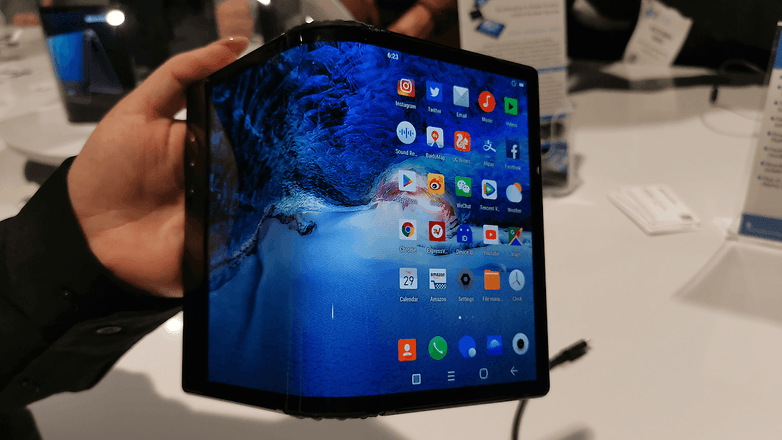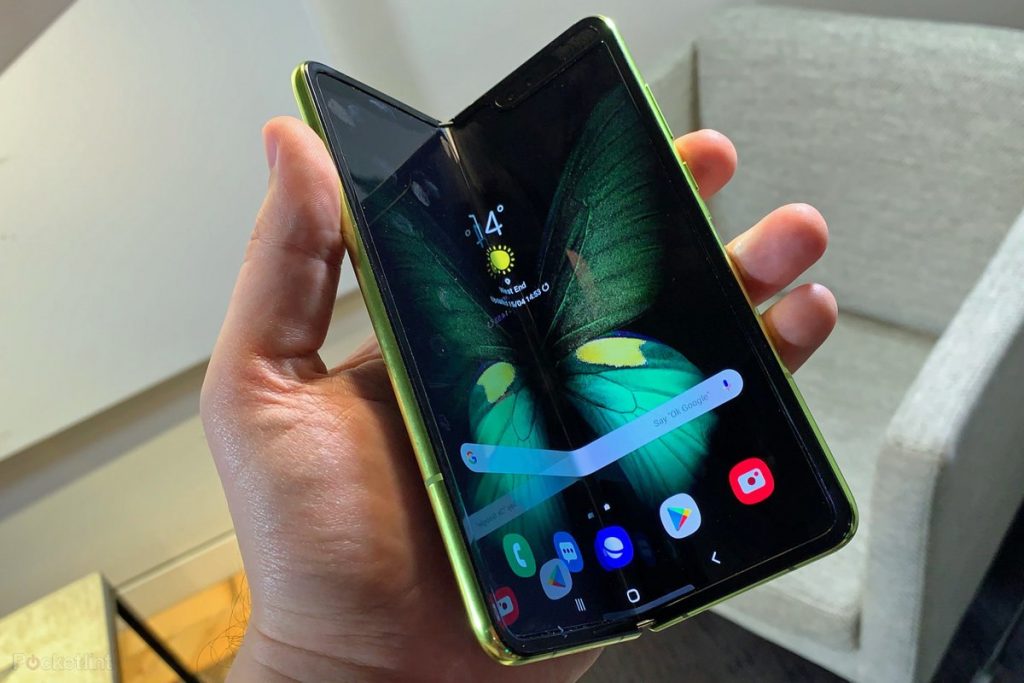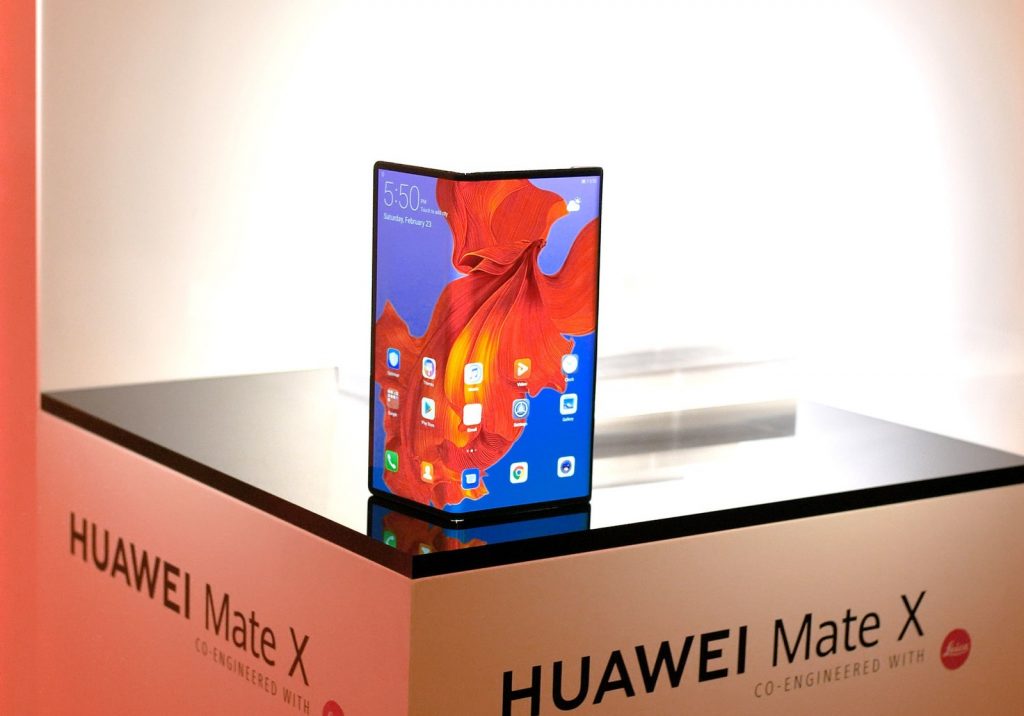Below, we take a look at the brands and companies working on foldable smartphones, what they have done so far, and how far their foldable phone project is from hitting the market. Additionally, we will also highlight some of the problems each manufacturer is faced and how they are dealing with it.
1. Royole
Royole is a California-based Chinese company, the first-ever company to complete and unveil a smartphone with foldable display. The device, Royole FlexPai (from $1,300), was released in November 2018 but only as a prototype which Royole dubbed the “Developer Edition”. The final and stable version was dubbed the “Consumer Edition” and the company estimated that it would take about 60-90 day to ship to consumers. Interestingly, the OEM fulfilled its promise as, according to Android Headlines, it began shipping the foldable FlexPai smartphone to customers last month (March 2019) just like it earlier estimated. So far, no consumer or reviewer has come forward to complain about the consumer edition of the Royole FlexPai. The Developer edition of the device, on the other hand, had a lot of “faults”. According to this report by NotebookCheck, the Royole FlexPai didn’t receive a lot of positive feedbacks from early users of the foldable device when it was first announced. The Royole FlexPai was called all sort of derogatory names. Generally, users of the device were: annoyed [because it doesn’t fold flat], unimpressed [at the device’s form factor as a phone], and unamazed [because the phone completely sacrifices usability in order to have a bendy screen]. Additionally, the software of the Royole FlexPai was also glitchy and terrible. At this moment though, it is unclear if Royole made appropriate changes to the (software and usability) complaints the Developer edition of its foldable phone received and implemented them on the final Consumer Edition before shipping them to consumers. I’m guessing they did but we’ll see.
2. Samsung
The Galaxy Fold (~$1,980) is Samsung’s first-ever smartphone with foldable form factor. The device is considered to be one of the most innovative piece of tech ever made by the South Korean giant. Currently, the Galaxy Fold is the only foldable phone with an “Innie” sort of design — i.e the foldable screen folds inwards. The Galaxy Fold with a 7.3-inch Super AMOLED HDR10+, Android 9 Pie OS, Snapdragon 855 SoC, 12GB RAM, triple rear-camera setup and a dual front-facing camera was announced earlier this year in February. Scheduled for an April 26 official public launch in the US, China, and South Korea, Samsung, as usual, sent review units of the Galaxy Fold to tech journalists and media houses. And that was where the turmoil began. A number of reviewers took to social media to reveal faults on the review units of their Galaxy Folds. While some of the faults were due to a defect in the folding mechanism of the display, majority of reviewers damaged the display of their Galaxy Folds because they removed a film (that looked like a disposable screen protector) from the screen of their device. Unbeknownst to them (and everybody else), the film wasn’t a screen protector but rather, a core component of the device’s foldable display. Samsung recalled the damaged reviewed units it earlier sent out and subsequently postponed the launch of the device. No new release date has been fixed though but Samsung says we should expect the device out in “the coming weeks”. That could be next week, two weeks, next month, or Whatever week Samsung says the Galaxy Fold ready.
3. Huawei
Hauwei’s foldable smartphone is dubbed the “Mate X“. The device was unveiled at the Mobile World Congress 2019 and is the major rival to Samsung’s Galaxy Fold. When unfolded, the Huawei Mate X (~$2,600) opens into a square-shaped tablet with 8-inch 2480 x 2200 pixels display and when folded into a phone mode, the main display is a 6.6-inch 1148 x 2480 pixels screen. Depending on how you use it, the Huawei Mate X is either a big phone or a small tablet. The Mate X’s design is great, but unlike the Royole FlexPai and the Galaxy Fold, there isn’t any provision for front-facing cameras when the device is fully unfolded. This means you either have to turn the phone around or fold it into a phone to take selfies with quad-camera setup on the rear. Unfortunately, information is scant regarding the performance and strength of the foldable screen of the Mate X. The OEM hasn’t sent out review units to tech journalists so this is as far as it goes with the Mate X. And while there are rumors that Huawei has pushed the launch of the device to September, the OEM maintains that the Mate X will be launched in June.
4. Xiaomi
If there’s any trend rocking the smartphone industry, you can trust Xiaomi not to be the last to jump such a trend. While the Chinese OEM doesn’t have any foldable smartphone out in the market, it has one in the works. And you should know, it’s way different from all foldable smartphone designs you have seen so far. Earlier this year, the company’s co-founder and President, Lin Bin, shared a one-minute teaser showing an engineering model (read: prototype) of its foldable phone. We aren’t sure what name Xiaomi will give the device (Mi Fold and Mi Flex are front-runners) neither do we have details of the device’s specifications. What we, however, know is that the device is a “Double folding phone” as both sides of the device can be folded sideways. True, the double-fold idea is unique and fantastic but I have some reservations. I mean, it’s enough stress to “carefully ” fold a tablet into a phone once, now we have to do it twice? And, according to the teaser, I don’t think you can use the Xiaomi foldable device as a phone by folding only one side; both ends have to be folded and unfolded. Too much stress. The double-fold technique aside, Xiaomi explains its foldable phone is gradually moving towards completion as it has solved a series of technical problems ranging from flexible folding screen technology to four-wheel drive folding shaft technology, flexible cover technology, and MIUI adaptation. As per pricing and release date, GSMArena reports that Xiaomi plans to launch its foldable smartphone into the market sometime between April and June. And interestingly, the device will reportedly sell $999, half the price of Samsung’s Galaxy Fold. Truthfully, every single manufacturer with foldable phones have all done beautiful, ground-breaking work. And while foldable phones might not climb up the same popularity (and adoption) scale as regular “unfoldable” phones we commonly use in our everyday life, it’s an interesting insight into what the future of the smartphone ecosystem would look like — a future rid of impossibilities.









